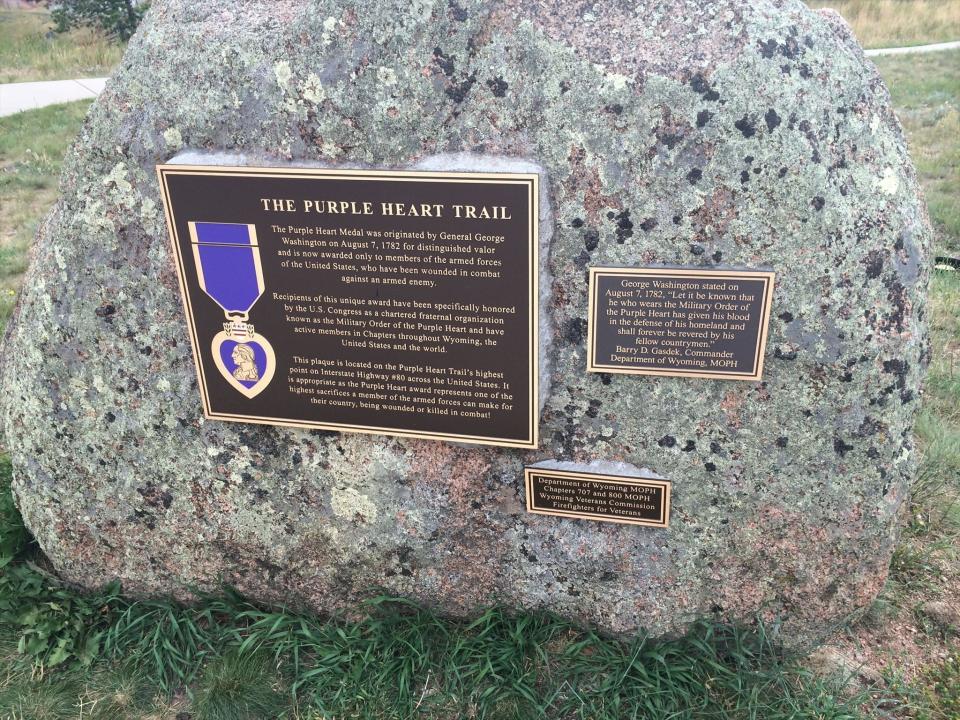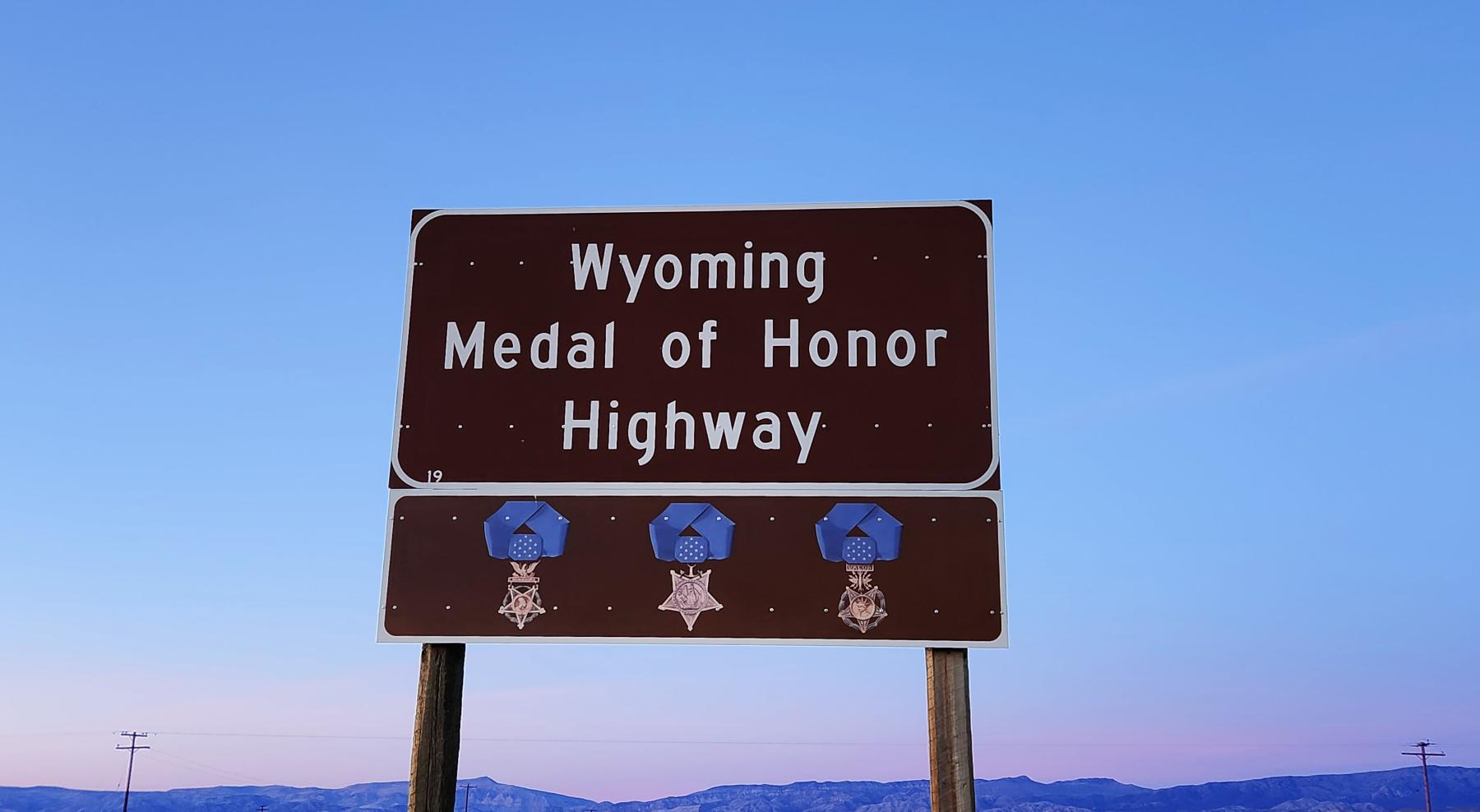Wyoming’s Highways of Remembrance
Where History and Sacrifice Meet the Open Road
As we approach the observance of Veteran's Day, our minds naturally turn toward gratitude and the solemn act of remembrance. Here in the Equality State, where history is as deep and broad as our horizons, this honor is woven directly into the very fabric of our geography: our roadways. The highways that crisscross Wyoming are not simply arteries for commerce or corridors for adventure; they are designated, continuous, and highly personal memorials to the men and women who gave everything for our nation.
In Wyoming, our frequent road trips can be more than a journey; they can be an impactful experience in history and reverence. Many of our most vital thoroughfares carry designations that compel us to reflect on the immense sacrifices made by service members from our state and across the country.
When you embark on a drive through Wyoming, you are traversing not only scenic and historical routes; you are traveling a series of state-spanning monuments that honor the ultimate sacrifice. I encourage every resident and visitor alike to take a moment to absorb the meaning of these roads. As you take in the beautiful, untamed sites of Wyoming along these magnificent scenic drives, let the incredible landscape remind you of the courage required to defend the land, the freedom, and the way of life we all cherish.
Let’s explore the profound history beneath the tires of our journey, starting with the road that connects us east to west.
The Purple Heart Trail: Interstate 80

The most frequent traveler across Wyoming—from Cheyenne to Evanston—will pass through the National Purple Heart Trail along the entire length of Interstate 80, from Evanston to Pine Bluffs. This designation, through a 2005 joint resolution by the Wyoming State Legislature, is one of the most poignant, honoring military personnel wounded or killed while serving in combat. The Purple Heart, originally established by George Washington in 1782 as the Badge of Military Merit, is the oldest military decoration in current use. To receive it means you have offered a personal measure of your being—your blood, your health, or your life—in defense of the nation.
While crossing the expansive high plains, the vast sagebrush deserts, and the rugged hills of the Continental Divide, we remember them. Every mile of this interstate carries the quiet dignity of those who bled for our freedom, allowing us to enjoy the stunning, vast vistas they defended. There is a deep, almost meditative silence in the Wyoming landscape, particularly along I-80. When you pull off at a rest stop or an overlook, that silence is the sound of peace—a peace bought dearly by the sacrifice of the wounded. The highway itself becomes a continuous, living monument, carrying us forward in freedom that was won through immense pain. It is an honor to drive a road dedicated to such profound bravery and endurance.
The Wyoming Medal of Honor Highway: U.S. Highway 20
If the Purple Heart represents sacrifice, then the Wyoming Medal of Honor Highway represents the peak of selfless courage. The entire length of U.S. Highway 20, from the Montana state line down to the Nebraska state line, carries this hallowed designation. The Medal of Honor is the highest and most rarely awarded military decoration. It is reserved for those who distinguish themselves conspicuously by gallantry and intrepidity at the risk of their lives above and beyond the call of duty.

Photo by A. Philp, Sunset, November 8, 2025
Traveling U.S. 20 is to traverse a large portion of Wyoming's heartland. It takes travelers past Cody, through Thermopolis, and down toward Casper. This highway, therefore, connects some of our state’s most important economic and natural landmarks with the most profound acts of human valor.
Driving this road requires an implicit act of reverence. As the landscape shifts from mountain passes to the Wind River Canyon and then onto the high desert plains, the physical effort of the drive mirrors the immense weight of the honor this highway carries. We are given an unparalleled opportunity to reflect on the nature of heroism—the sudden, terrifying moment of decision where an individual chose others before themselves—while absorbing the stunning, diverse, and wholly free landscapes of Wyoming. It is a road that asks us not just to look, but to truly see the privilege of our geography in the context of their legacy.
The Wyoming Veterans Memorial Highway: U.S. 14-Alternate
Not all acts of service lead to decorations, but all acts of service deserve remembrance. That is the spirit behind the Wyoming Veterans Memorial Highway, designated along U.S. Highway 14-Alternate between the picturesque towns of Cody and Powell.
This scenic drive through the Bighorn Basin serves as a tribute to all our veterans—those who served in conflict and those who served in peace; those who returned home and those who now rest beneath our vast skies.
This region is famous for its rich agricultural history and its strong sense of community, and the highway reflects this heritage. It connects us to the communities built by those who returned home, the veterans who traded in their uniforms for work clothes and poured their dedication back into the land. The Bighorn Basin offers a spectacularly peaceful backdrop for contemplating their service.
The designation reminds us that veteran history is local history. We remember the names on the town memorials, the neighbors who served, and the families that sacrificed. The Wyoming Veterans Memorial Highway is a testament to the enduring bond between the service member and the home they defended, providing a beautiful, peaceful place for contemplation along the way.
The Blue Star Memorial Highways: A National Tribute

We find moments of quiet tribute along the Blue Star Memorial Highways. These markers, often championed by Garden Clubs across America, are not fixed to one long route but are found in strategic, serene spots—near parks, veteran facilities, and alongside scenic overlooks.
The Blue Star Memorial program began as a tribute to World War II veterans. The blue star itself, a symbol displayed in the windows of homes during both World Wars to denote a family member in the service, carries a deep emotional weight. Today, these markers continue to pay universal respect to the U.S. Armed Forces, acting as beautiful, anchored points of rest and reflection within the landscape.
Spotting a Blue Star marker invites you to pause your journey, step out of your vehicle, and reflect on the dedication of service members past and present. They remind us that the peace and natural splendor we enjoy—the ability to travel freely through our incredible state—is the enduring legacy of their selfless duty.
Wyoming Vietnam Veterans Welcome Home Highway
And finally, we must honor the veterans whose sacrifice went unacknowledged for too long. Interstate 25, our major north-south corridor running from the Colorado border right up to Buffalo, carries the immensely important designation of the Wyoming Vietnam Veterans Welcome Home Highway. This highway serves as a powerful and enduring "welcome home" to a generation of service members, recognizing the unfortunate fact that many did not receive a proper reception upon returning from the Vietnam War. By dedicating this vital artery, the state of Wyoming has made a profound commitment to honoring all veterans, especially those whose service was not immediately acknowledged by the nation. It stands as a constant, physical reminder, running right through the heart of our state, that a grateful Wyoming is taking the time, however long it took, to thank its heroes.
In Wyoming, the profound beauty of our landscape and the depth of our history are inseparable. The state's dedication to service is not hidden away in a museum; it is visible every time we hit the open road. As you plan your travels this month and beyond, I encourage you to see these roads not just as functional routes, but as sacred, historical trails.
Take a moment to notice the signs, read the dedication markers, and carry the spirit of profound respect for our veterans with you. Our highways stand as enduring reminders that the price of the "Equality State" is one that has been paid, and continues to be honored, every single day.
Happy and mindful travels on Wyoming’s History Highway!

